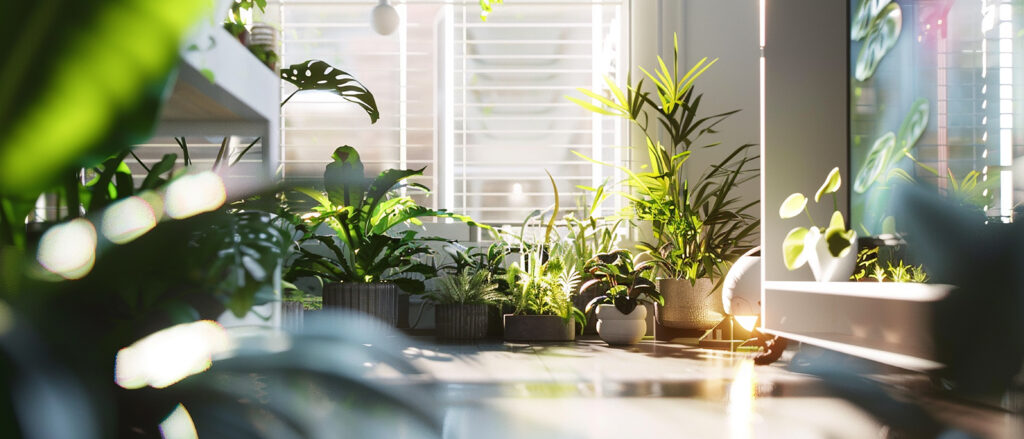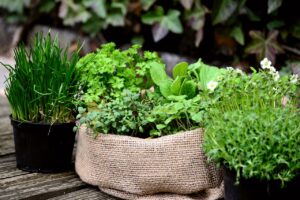Indoor air quality significantly impacts our health and well-being, and incorporating air-purifying plants into your home creates a natural way to cleanse your environment. These remarkable plants add beauty to your space and work tirelessly to remove common household toxins, creating a healthier atmosphere for you and your family.
Understanding Air-Purifying Plants
The science behind air-purifying plants reveals their remarkable ability to absorb toxins through their leaves and roots. These plants transform harmful compounds into harmless substances through photosynthesis and other biological processes, effectively cleaning our air. NASA research has identified several indoor plants that are particularly effective at removing common indoor pollutants such as formaldehyde, benzene, and trichloroethylene.
Snake Plant (Sansevieria)
The snake plant is one of the most effective air purifiers available. This striking plant converts carbon dioxide into oxygen at night, making it perfect for bedrooms. Its tall, architectural leaves remove formaldehyde and benzene from the air while requiring minimal care. Snake plants thrive in various light conditions and can go weeks between watering, making them ideal for busy homeowners.
Peace Lily (Spathiphyllum)
Peace lilies combine elegant white blooms with powerful air-purifying abilities. These beautiful plants excel at removing common household toxins, including ammonia, benzene, and formaldehyde. Their glossy green leaves and periodic white flowers add a touch of sophistication to any room. Peace lilies prefer moderate indirect light and communicate their watering needs clearly by drooping slightly when thirsty.

Spider Plant (Chlorophytum comosum)
Spider plants rank among the most adaptable air-purifying options available. Their cascading leaves remove xylene and carbon monoxide from the air while producing plenty of oxygen. These hardy plants propagate quickly through their distinctive “spiderettes,” allowing you to multiply your air-cleaning army naturally. Their arching foliage works beautifully in hanging baskets or on elevated surfaces.
Rubber Plant (Ficus elastica)
Rubber plants serve as powerful air purifiers while making bold architectural statements. Their large, glossy leaves efficiently filter air pollutants and release high oxygen levels. These striking plants can grow tall, creating dramatic vertical interest in your space. Their thick leaves naturally attract and trap airborne particles, making them especially effective in rooms with poor air circulation.
Boston Fern (Nephrolepis exaltata)
Boston ferns excel at removing formaldehyde while adding a touch of lush greenery to any room. Their delicate fronds humidify the air naturally, making them perfect for dry indoor environments. These classic beauties prefer consistent moisture and humid conditions, thriving in bathrooms or kitchens where they can absorb steam while purifying the air.
Dracaena Varieties
Dracaena plants offer diverse options for air purification, with varieties suitable for different spaces and lighting conditions. Their strappy leaves effectively remove benzene, formaldehyde, and trichloroethylene from the air. Other varieties feature varying leaf patterns and colors, allowing you to choose options that complement your decor while maintaining excellent air-purifying properties.
Chinese Evergreen (Aglaonema)
Chinese evergreens combine powerful air-purifying abilities with striking foliage patterns. These adaptable plants remove multiple air pollutants while tolerating various light conditions. Their beautiful leaves come in green, silver, and pink patterns, adding visual interest to your space. Chinese evergreens grow slowly and steadily, requiring minimal maintenance while continuously cleaning your air.
Creating Plant Combinations
Maximizing air purification involves strategically combining different plants throughout your space. Place larger specimens like rubber plants or dracaenas in room corners or near furniture groups. Distribute smaller plants like peace lilies or snake plants on tables and shelves. Hang spider plants near windows or in reading nooks where their cascading forms can shine.
Optimal Placement for Maximum Effect
Position your air-purifying plants where they can work most effectively. Place them near potential sources of pollutants, such as printers, furniture, or electronic equipment. Consider airflow patterns in your home and position plants where they can intercept and clean circulating air. Remember that most air-purifying plants prefer indirect light and moderate humidity.
Seasonal Care Considerations
Adjust your care routine seasonally to maintain healthy, effective air-purifying plants. Reduce watering during winter months when growth naturally slows. Clean leaves regularly to maximize their air-cleaning efficiency and retain their attractive appearance. Monitor humidity levels and adjust accordingly, perhaps grouping plants during dry winter months.
Supporting Plant Health
Healthy plants purify air more effectively, making proper care essential. Use well-draining potting mix and containers with drainage holes to prevent root problems. Monitor light levels and rotate plants periodically to ensure even growth. Feed with a balanced fertilizer during the growing season to support robust growth and air-purifying functions.
Long-Term Maintenance
Establish a regular maintenance routine to keep your air-purifying plants healthy and effective. Remove dead or yellowing leaves promptly to maintain plant health and appearance. Repot plants when they outgrow their containers, typically every two to three years. Prune as needed to keep the desired size and shape while encouraging healthy new growth.
Your collection of air-purifying plants will continuously work to create a healthier indoor environment. Through thoughtful selection and proper care, these natural air filters will thrive while improving your home’s air quality. Remember that consistency in care leads to the best results, allowing your plants to clean your air while beautifying your space effectively.



